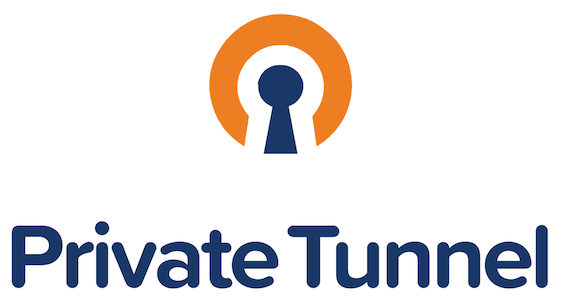The Ultimate Guide to Content Marketing Metrics Measuring Success in the Digital Age
Discover how to effectively measure success in the digital age with "The Ultimate Guide to Content Marketing Metrics." This comprehensive guide explores essential metrics, strategies, and tools to help you optimize your content marketing efforts and achieve your business goals.
In the fast-evolving world of digital marketing, content is king. However, creating high-quality content is just the beginning. To truly understand the impact of your efforts and to refine your strategy, you need to delve into content marketing metrics. These metrics not only help you gauge the effectiveness of your content but also provide actionable insights for future campaigns. This guide will walk you through the essential content marketing metrics you should be tracking to ensure your content strategy is on the right track.
What Are Content Marketing Metrics?
Content marketing metrics are quantitative measures used to assess the performance of your content marketing efforts. They help in evaluating how well your content is resonating with your audience and achieving your business objectives. By analyzing these metrics, you can determine what’s working, what’s not, and where to allocate resources for maximum impact.
Key Content Marketing Metrics to Track
-
Traffic Metrics
- Page Views: This is the most basic metric, indicating how many times a page or piece of content has been viewed. High page views suggest that your content is attracting visitors.
- Unique Visitors: Unlike page views, which count every visit, unique visitors measure the number of distinct individuals who have visited your content. This helps in understanding the reach of your content.
- Traffic Sources: Understanding where your traffic is coming from (e.g., organic search, social media, referral links) can provide insights into which channels are most effective for distributing your content.
-
Engagement Metrics
- Time on Page: This metric measures how long visitors stay on your content. A longer time on page typically indicates that your content is engaging and valuable to readers.
- Bounce Rate: The bounce rate shows the percentage of visitors who leave your site after viewing only one page. A high bounce rate may suggest that your content is not meeting user expectations or that the user experience needs improvement.
- Pages Per Session: This metric indicates the average number of pages a visitor views during a session. More pages per session can signify that visitors find your content engaging and are exploring other related articles.
-
Conversion Metrics
- Conversion Rate: This is the percentage of visitors who take a desired action, such as filling out a form, subscribing to a newsletter, or making a purchase. High conversion rates indicate that your content is effectively driving user actions.
- Lead Generation: For B2B companies, tracking how many leads are generated through content (e.g., whitepapers, eBooks, webinars) is crucial. This metric helps in assessing the content’s role in the sales funnel.
- Cost per Conversion: This metric calculates the cost associated with acquiring a new customer through your content. It helps in evaluating the cost-effectiveness of your content marketing strategy.
-
Social Media Metrics
- Shares and Likes: The number of shares and likes your content receives on social media platforms can provide an indication of its popularity and resonance with your audience.
- Comments and Mentions: Analyzing comments and mentions helps in understanding how your content is being perceived and discussed by your audience.
- Social Media Traffic: Tracking the amount of traffic driven to your site from social media can help in evaluating the effectiveness of your social media strategy.
-
SEO Metrics
- Organic Search Traffic: This measures the amount of traffic coming from search engines. High organic traffic indicates that your content is optimized for relevant keywords and is ranking well in search engine results.
- Keyword Rankings: Monitoring the rankings of your targeted keywords helps in assessing the effectiveness of your SEO efforts and identifying areas for improvement.
- Backlinks: The number and quality of backlinks to your content can impact its authority and search engine rankings. More backlinks from reputable sites generally contribute to higher rankings.
-
Content-Specific Metrics
- Top-Performing Content: Identifying which pieces of content are performing the best in terms of traffic, engagement, and conversions helps in understanding what topics and formats resonate with your audience.
- Content Longevity: This metric evaluates how long content continues to attract traffic and engagement after its initial publication. Evergreen content typically has a longer lifespan and continues to drive value over time.
Why Measuring Content Marketing Metrics Is Crucial
Measuring content marketing metrics is essential for several reasons:
- Improves Strategy: By analyzing metrics, you can identify what’s working and what’s not, allowing you to refine your content strategy for better results.
- Justifies Investment: Metrics provide tangible evidence of the ROI of your content marketing efforts, helping in justifying the investment in content creation and distribution.
- Enhances Audience Understanding: Metrics help in understanding your audience’s preferences and behavior, enabling you to create more relevant and engaging content.
- Facilitates Goal Setting: Setting measurable goals and tracking progress against them ensures that your content marketing efforts are aligned with your business objectives.
Tools for Tracking Content Marketing Metrics
Several tools can help you track and analyze content marketing metrics:
- Google Analytics: A comprehensive tool for tracking website traffic, user behavior, and conversion rates.
- SEMrush: Useful for monitoring keyword rankings, backlinks, and SEO performance.
- BuzzSumo: Helps in analyzing content performance on social media and identifying top-performing content topics.
- Social Media Analytics Tools: Platforms like Facebook Insights, Twitter Analytics, and LinkedIn Analytics provide valuable insights into social media engagement and performance.
In the realm of content marketing, measuring success goes beyond creating compelling content. It involves a detailed analysis of various metrics to understand how well your content is performing and how it contributes to your overall marketing goals. By focusing on traffic, engagement, conversion, social media, SEO, and content-specific metrics, you can gain a comprehensive view of your content’s effectiveness and make data-driven decisions to enhance your strategy. Embracing these metrics will not only help in optimizing your content marketing efforts but also in achieving long-term success in the digital landscape.
Advanced Strategies for Optimizing Content Marketing Metrics
While understanding and tracking basic content marketing metrics is crucial, advancing your strategy involves diving deeper into more sophisticated analytics and leveraging insights to refine your approach. Here are some advanced strategies to help you optimize your content marketing metrics:
Segmentation and Personalization
- Audience Segmentation: Break down your audience into different segments based on demographics, behavior, or interests. By analyzing metrics for each segment, you can tailor your content to better meet the specific needs and preferences of each group.
- Personalized Content: Use insights from audience segmentation to create personalized content experiences. Personalization can increase engagement, improve conversion rates, and enhance user satisfaction. Track how personalized content performs compared to generic content to measure its effectiveness.
Advanced A/B Testing
- Content Variations: Experiment with different variations of your content (e.g., headlines, images, calls to action) to see which version performs best. Use A/B testing tools to systematically compare the effectiveness of different content elements.
- Iterative Testing: Continuously refine your content based on A/B test results. Small, incremental changes can lead to significant improvements in performance over time. Track the results of each iteration to understand what drives the best outcomes.
Attribution Modeling
- Multi-Touch Attribution: Implement multi-touch attribution models to understand the contribution of each touchpoint in the customer journey. This approach provides a more comprehensive view of how different content pieces and channels work together to drive conversions.
- Customer Journey Analysis: Analyze the entire customer journey to identify which content stages are most influential in moving prospects through the sales funnel. This can help you allocate resources more effectively and optimize content for different stages of the journey.
Predictive Analytics
- Trend Analysis: Use predictive analytics to identify emerging trends and forecast future content performance. By analyzing historical data and current trends, you can anticipate what type of content will resonate with your audience in the future.
- Content Forecasting: Implement forecasting models to predict the potential success of upcoming content. This can help in planning content strategies and allocating resources to maximize impact.
Enhanced SEO Metrics
- Content Gap Analysis: Perform a content gap analysis to identify topics or keywords that are underrepresented in your content strategy. By filling these gaps, you can attract more traffic and improve your search engine rankings.
- Competitive Analysis: Analyze the SEO metrics of your competitors to gain insights into their content strategies and identify opportunities for improvement. Tools like Ahrefs and Moz can provide valuable data on competitors' keyword rankings and backlink profiles.
Content Performance Benchmarks
- Industry Benchmarks: Compare your content performance metrics against industry benchmarks to gauge how well you are doing relative to competitors. This can help you set realistic goals and identify areas where you can improve.
- Historical Benchmarks: Track your own historical performance to understand trends and patterns. Use this data to set benchmarks for future content and measure progress over time.
Customer Feedback and Sentiment Analysis
- Surveys and Polls: Collect direct feedback from your audience through surveys and polls. This qualitative data can provide insights into how your content is perceived and suggest areas for improvement.
- Sentiment Analysis: Use sentiment analysis tools to gauge the overall sentiment of comments and feedback related to your content. Understanding how your audience feels about your content can help you tailor your messaging and address any issues.
Content ROI Analysis
- Cost-Benefit Analysis: Perform a cost-benefit analysis to evaluate the return on investment (ROI) of your content marketing efforts. This involves comparing the costs of content creation and distribution with the revenue or value generated from content-driven actions.
- Lifetime Value (LTV) of Content: Assess the long-term value of your content by measuring how it contributes to customer retention and lifetime value. High-quality content that continues to drive engagement and conversions over time can provide significant ROI.
Implementing a Data-Driven Content Marketing Strategy
To effectively leverage content marketing metrics, it’s essential to adopt a data-driven approach. Here are steps to implement a data-driven content marketing strategy:
-
Set Clear Objectives: Define specific, measurable objectives for your content marketing efforts. Clear goals will guide your metrics tracking and analysis.
-
Choose Relevant Metrics: Select the metrics that align with your objectives and provide actionable insights. Avoid getting bogged down by irrelevant data.
-
Use Advanced Tools and Technologies: Invest in advanced analytics tools and technologies to gather and analyze data. Tools like Google Analytics, SEMrush, and HubSpot can provide deeper insights into content performance.
-
Regularly Review and Adjust: Continuously review your metrics and adjust your content strategy based on the insights you gather. Regular reviews ensure that your strategy remains aligned with your goals and market trends.
-
Foster a Data-Driven Culture: Encourage your team to embrace data-driven decision-making. Share insights and results across the team to drive collaboration and improve overall content strategy.
In today’s competitive digital landscape, measuring and optimizing content marketing metrics is essential for success. By focusing on key metrics like traffic, engagement, conversion, social media, SEO, and content-specific measures, you can gain valuable insights into your content’s performance. Advanced strategies such as segmentation, A/B testing, attribution modeling, and predictive analytics can further enhance your approach and drive better results.
Implementing a data-driven content marketing strategy will enable you to make informed decisions, allocate resources effectively, and achieve your business objectives. As content marketing continues to evolve, staying ahead of trends and leveraging advanced metrics will be crucial in maintaining a competitive edge and maximizing the impact of your content efforts.
Frequently Asked Questions (FAQ) About Content Marketing Metrics
1. What are content marketing metrics?
Content marketing metrics are quantitative measures used to evaluate the effectiveness of your content marketing efforts. They help you understand how well your content is performing in terms of attracting, engaging, and converting your audience. Key metrics include traffic, engagement, conversion rates, social media performance, and SEO rankings.
2. Why are content marketing metrics important?
Content marketing metrics are crucial because they provide insights into how well your content is meeting your business objectives. They help you gauge the success of your content strategy, justify investments, improve audience understanding, and make data-driven decisions to enhance future content.
3. What are the most important content marketing metrics to track?
Key metrics to track include:
- Traffic Metrics: Page views, unique visitors, traffic sources.
- Engagement Metrics: Time on page, bounce rate, pages per session.
- Conversion Metrics: Conversion rate, lead generation, cost per conversion.
- Social Media Metrics: Shares, likes, comments, social media traffic.
- SEO Metrics: Organic search traffic, keyword rankings, backlinks.
- Content-Specific Metrics: Top-performing content, content longevity.
4. How can I track content marketing metrics?
You can track content marketing metrics using various tools:
- Google Analytics: For website traffic, user behavior, and conversion tracking.
- SEMrush: For keyword rankings and SEO performance.
- BuzzSumo: For social media performance and content analysis.
- Social Media Analytics Tools: For tracking engagement and performance on platforms like Facebook, Twitter, and LinkedIn.
5. What is the difference between page views and unique visitors?
Page views count the total number of times a page is viewed, including multiple views by the same visitor. Unique visitors measure the number of distinct individuals who visit a page, regardless of how many times they visit. Unique visitors provide a clearer picture of your content’s reach.
6. What is a good bounce rate?
A good bounce rate varies by industry and content type, but generally, a bounce rate between 40% and 60% is considered normal. A higher bounce rate may indicate that your content is not meeting user expectations or that there are issues with user experience.
7. How can I improve my content’s conversion rate?
To improve your content’s conversion rate:
- Optimize Calls to Action (CTAs): Ensure CTAs are clear, compelling, and strategically placed.
- Create High-Quality Content: Provide valuable and relevant content that addresses your audience’s needs.
- A/B Test Content: Experiment with different content variations to see what drives the best results.
- Enhance User Experience: Improve website design and usability to facilitate easier conversions.
8. What is multi-touch attribution?
Multi-touch attribution is a model that assigns credit to multiple touchpoints in the customer journey rather than just the final touchpoint. It provides a more comprehensive view of how different content pieces and channels contribute to conversions.
9. How can predictive analytics help in content marketing?
Predictive analytics can help forecast future content performance by analyzing historical data and identifying emerging trends. This allows you to anticipate what content will resonate with your audience and plan your strategy accordingly.
10. What is content gap analysis?
Content gap analysis involves identifying topics or keywords that are underrepresented in your current content strategy. By addressing these gaps, you can create content that fills unmet needs and attracts more traffic.
11. How can I use sentiment analysis in content marketing?
Sentiment analysis helps you understand how your audience feels about your content based on comments and feedback. This insight can guide content adjustments, address negative sentiments, and enhance overall content strategy.
12. What tools are best for tracking SEO metrics?
Popular tools for tracking SEO metrics include:
- Google Search Console: For monitoring search performance and indexing issues.
- SEMrush: For keyword rankings, backlinks, and competitive analysis.
- Ahrefs: For in-depth SEO analysis and link-building opportunities.
- Moz: For keyword tracking, domain authority, and SEO insights.
13. How often should I review my content marketing metrics?
Regular review is essential for effective content marketing. Typically, reviewing metrics on a monthly basis is a good practice, but depending on your content frequency and campaign duration, you may need to review more or less frequently.
14. What is content ROI, and how can I measure it?
Content ROI (Return on Investment) measures the revenue or value generated from your content relative to its cost. To measure content ROI:
- Calculate Costs: Include content creation, distribution, and promotion costs.
- Track Revenue: Measure the revenue generated through content-driven actions (e.g., conversions, leads).
- Compare: Divide the revenue by the total costs to determine ROI.
15. How can I ensure my content marketing strategy is data-driven?
To ensure a data-driven content marketing strategy:
- Set Clear Objectives: Define measurable goals for your content.
- Choose Relevant Metrics: Focus on metrics that align with your goals.
- Use Advanced Tools: Utilize analytics tools for comprehensive data insights.
- Review and Adjust: Regularly analyze data and make necessary adjustments.
- Foster a Data-Driven Culture: Encourage data-driven decision-making within your team.
Get in Touch
Website – https://www.webinfomatrix.com
Mobile - +91 9212306116
Whatsapp – https://call.whatsapp.com/voice/9rqVJyqSNMhpdFkKPZGYKj
Skype – shalabh.mishra
Telegram – shalabhmishra
Email - info@webinfomatrix.com
What's Your Reaction?
























